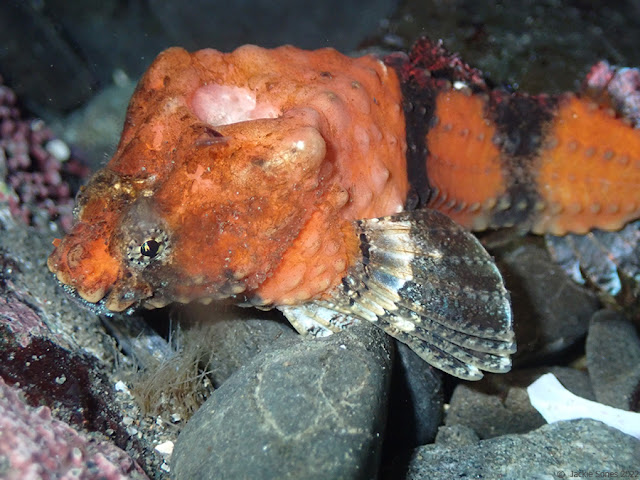
Okay, so this is a story about some photos that didn't quite work out. And a follow-up when I was surprised when the same species showed up in a couple of other photos and I hadn't even realized they were there!
I was trying to photograph this small amphipod (Thorlaksonius sp., formerly Pleustes sp.) resting on algae. They have an unusual shape — rounded at one and and pointed at the other — which makes them look like snails. (Indeed, it's thought that this amphipod has evolved to mimic snails to avoid attention from visual predators like fish.)
I wasn't having much luck with the first one (above), but then I found another so tried again. Still not a great photo as I was only able to photograph it from above:
I was frustrated and gave up, and didn't notice any
other amphipods like this that night. But later when I was reviewing my other photos, I
noticed two more amphipods that I hadn't seen in the field. I had been so focused on the other animals I was trying to photograph that I completely missed the amphipods.
Here's one while I was trying to photograph a Ten-tentacled Sea Anemone (Halcampa decemtentaculata):
Yes, that's an amphipod near the bottom of the photo in the center — this one was pink with white stripes.
Later I was trying to photograph a sculpin. Can you find the amphipod in the photo below?
Yes, that's it, sitting on the back of the fish. It's small, with red, white, and pink stripes, and it's resting on the wide pale stripe in the middle of the fish.
Hmmpph! I'll have to keep my eye out for them the next time we're at this site. And I learned a lot about the variable color patterns of this amphipod species, even if I missed them in the field.















































